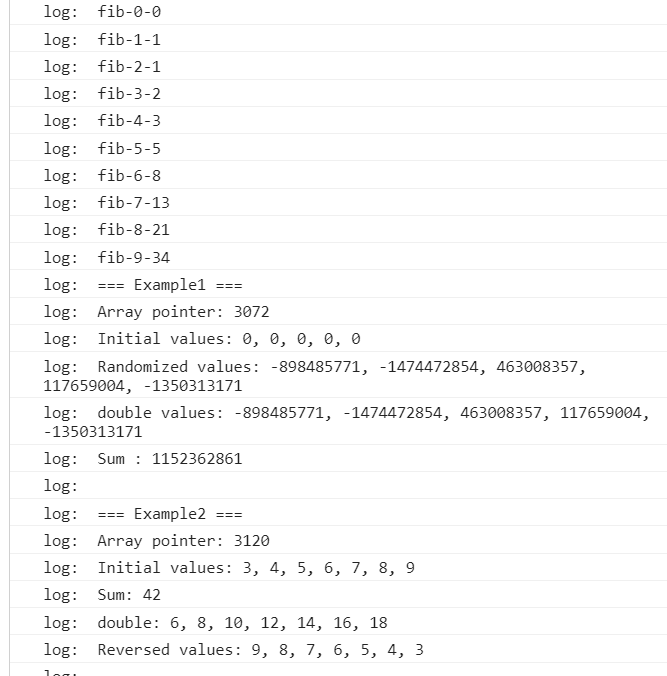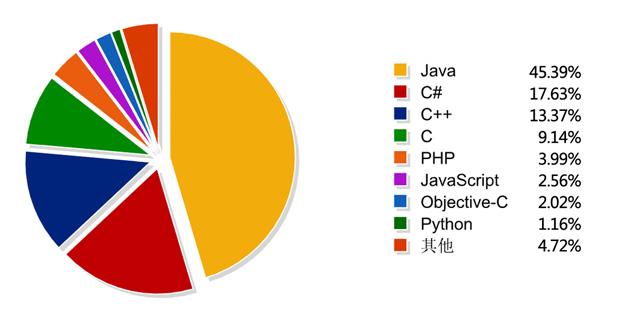asm 数组的双向传递
asm目前测试中比js大概能快 1.2 – 1.5倍左右
c/c++ 能快1.7 – 2.3 倍左右
asm的最大优势还是书写可以使用类似ts的语法, 比go和c系更加方便, 学习和改造已有工具的成本不大
但是性能还是问题, 这点性能并不足以有动力去做改造…. 还是有点慢…….且配套设施和工具就远不如go和c了
index.ts
// The entry file of your WebAssembly module.
/** Creates a new array and returns it to JavaScript. */
export function createArray(length: i32): Int32Array {
return new Int32Array(length);
}
/** Randomizes the specified array"s values. */
export function randomizeArray(arr: Int32Array): void {
for (let i = 0, k = arr.length; i < k; ++i) {
let value = i32((Math.random() * 2.0 - 1.0) * i32.MAX_VALUE);
unchecked((arr[i] = value));
}
}
export function double(data: Int32Array): Int32Array {
return data.map((i) => i * 2);
}
/** Computes the sum of an array"s values and returns the sum to JavaScript. */
export function sumArray(data: Int32Array): i32 {
return data.reduce((pre, cur) => pre + cur, 0);
}
// We"ll need the unique Int32Array id when allocating one in JavaScript
export const Int32Array_ID = idof<Int32Array>();
export function add(a: i32, b: i32): i32 {
return a + b;
}
export function fib(n: i32): i32 {
return n < 2 ? n : fib(n - 1) + fib(n - 2);
}
vue文件, 可以使用webpack打包的!
<template> </template>
<script>
import loader from "@assemblyscript/loader";
export default {
async mounted() {
const WASM_URL = "../../build/optimized.wasm";
const wasmModule = await loader.instantiateStreaming(fetch(WASM_URL));
console.log("wasmModule: ", wasmModule);
const instance = wasmModule.instance;
console.log("instance: ", instance);
const exports = wasmModule.exports;
console.log("exports", exports);
const log = (msg = "
") => {
console.log("log: ", msg);
};
for (let i = 0; i < 10; i++) log(["fib", i, exports.fib(i)].join("-"));
function example1() {
log("=== Example1 ===");
const { __release, __getArray } = exports;
let arrayPtr = exports.createArray(5);
log(`Array pointer: ${arrayPtr}`);
log("Initial values: " + __getArray(arrayPtr).join(", "));
// Randomize the array in WebAssembly and log it again
exports.randomizeArray(arrayPtr);
log("Randomized values: " + __getArray(arrayPtr).join(", "));
exports.double(arrayPtr);
log("double values: " + __getArray(arrayPtr).join(", "));
// Compute the array values" sum and log it. This will overflow i32 range.
let total = exports.sumArray(arrayPtr);
log(`Sum : ${total}`);
// We are done with the array, so release the reference
__release(arrayPtr);
log();
}
example1();
// A slightly more advanced example allocating the array in JavaScript instead
// of WebAssembly, and utilizing a live view to modify it in WebAssembly memory.
// Still involves just a single reference to track.
function example2() {
log("=== Example2 ===");
// Obtain the necessary runtime helpers
const {
__retain,
__release,
__allocArray,
__getArray,
__getArrayView,
} = exports;
// Create a new array, but this time in JavaScript. Note that we have to
// retain a reference to our allocation while we use it.
let arrayPtr = __retain(
__allocArray(exports.Int32Array_ID, [3, 4, 5, 6, 7, 8, 9])
);
log("Array pointer: " + arrayPtr);
// Log its elements to make sure these are the provided values
log("Initial values: " + __getArray(arrayPtr).join(", "));
// Compute the array values" sum and log it
let total = exports.sumArray(arrayPtr);
log("Sum: " + total);
let double = exports.double(arrayPtr);
log("double: " + __getArray(double).join(", "));
// Instead of copying, let"s obtain a live view on the array and modify its
// values right in WebAssembly memory.
let view = __getArrayView(arrayPtr);
view.reverse();
// Log the array"s elements, now reversed
log("Reversed values: " + __getArray(arrayPtr).join(", "));
// We are done with the array, so release the reference
__release(arrayPtr);
log();
}
example2();
},
};
</script>
<style></style>
输出正常



